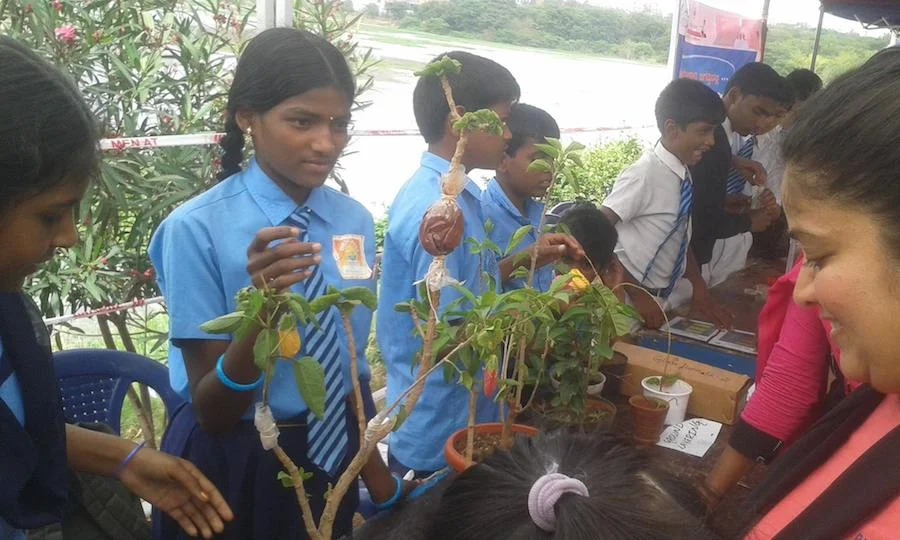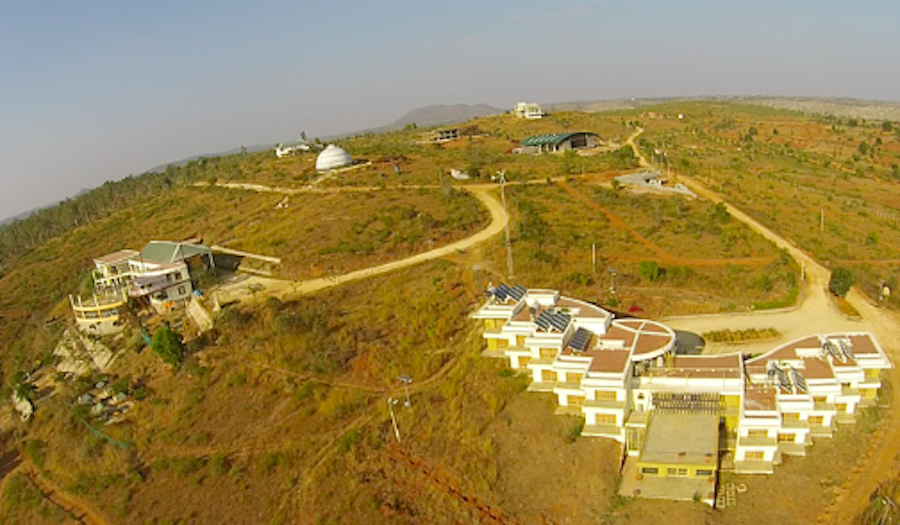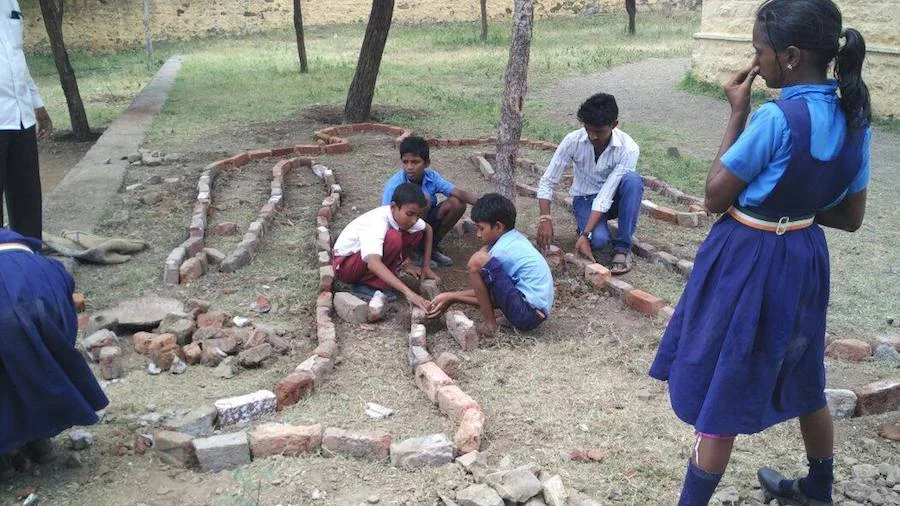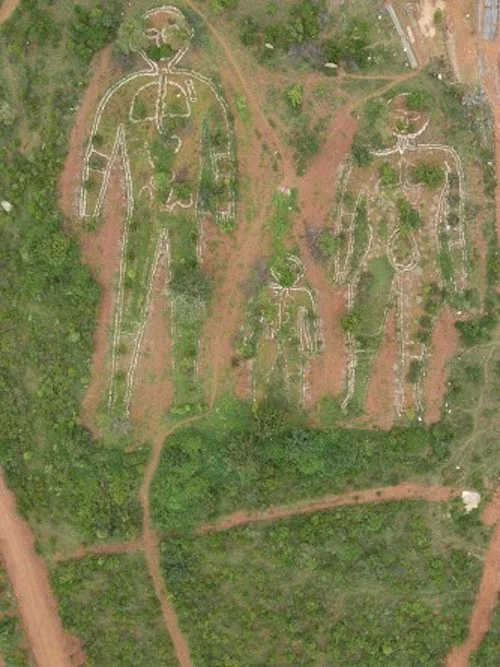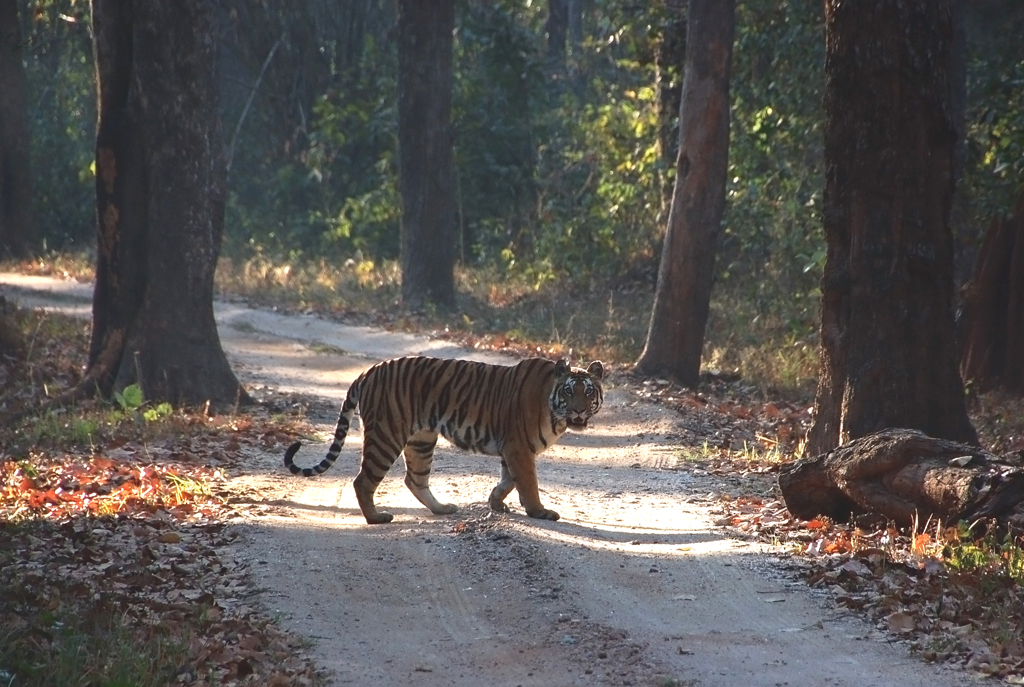Living Lessons In Nature's Outdoor Classroom

In 2012, Jyotsna and Bhargavi, two government school students from rural Andhra Pradesh got on a plane headed for Pittsburgh to attend the International Intel IRIS Science Fair, an annual inter-school competition to nurture scientific temper and build an interest in research and technology among youth. They were going as special delegates to introduce their project ‘A study for growing oxygen on highways’ where the duo identified the best trees to grow on the road dividers of the Indian highways to counter reducing tree cover and depleting oxygen in cities. The same year, Santosh Banakar, a student from Hubli won an award for his project on the larvicidal effect of citrus peel oil, and another student developed his idea for organic shoe polish made by combining sheep dung, vaseline and charcoal.
So, what was it that was sparking this spirit of discovery and transforming these students - learners in a system centred on rote-learning and close to absent focus on science - into innovators?
In 1999, Agastya International Foundation established its flagship campus in Kuppam, Andhra Pradesh to make hands-on science learning accessible free-of-cost to economically disadvantaged rural students in government-run schools. The sprawling 172-acre campus, designed as a creativity lab or ‘school for schools’, was meant to make science stimulating and its learning fun for children. It houses science, math, robotics, art and media labs, a planetarium, and a new bio-discovery centre modelled on a termite mound, complete with natural air-conditioning!
Agastya students at an ecology fair. Image: Facebook/ Agastya International Foundation
Everyday, 700 students from rural schools in Andhra Pradesh, Karnataka and Tamil Nadu are transported to spend a day at Kuppam where they tinker in the various labs, conduct experiments and simulations, interact with life-sized models, and expand their learning beyond the classroom and textbooks. Outdoors, the campus is a living lab to study the biodiversity of India. In 2009, ecology was introduced at Agastya, and unlike other subjects which augment state school curriculum, ecology lessons are largely self-determined.
On a visit to the campus, students could choose to spend the day at the natural farm where they learn how to identify and collect the best seeds from a crop, how to test soil, graft plants or prepare compost. They have opportunities to examine big, important questions such as ‘Why must we conserve nature?’ and ‘Why are so many plant species endangered?’
Agastya's Kuppam campus in 2014
The campus provides ample ‘Ah, Aha and Haha’ opportunities - the transition from curiosity to discovery, comprehension and enjoyment that underpins the learning process and forms the 3-fold principle that Agastya's approach is based on. There are no ecology lessons in progress on the day I visit, but I get a taste of what it would feel like to be a student in an open-air classroom. In one afternoon, I learn how plants go extinct (hint: falling pollinator populations and the concreting up of soil surfaces are significant causes), and about anthocyanins - pigments that protect tender leaves from UV rays. “These fallen leaves teeming with spiders, earthworms and insects and the promise of new life, is itself a great micro-study," says Loknath, ecology teacher at the campus, indicating a pile of leaf litter under a tree. In Eyes on Nature, students are encouraged to observe nature and the questions they ask form the basis of the day’s lessons. “Just by observing, children have learnt about biomimicry, for instance, or how seeds are designed to be dispersed differently, or about the critical connection between pollinators and the food we eat,” he says.
Aerial view of the Kuppam campus in 2017
The campus is green and cool, an anomaly in this arid, rocky, scrub-covered landscape. But, it was not always the tree-covered oasis it is today, explains Laksha Kumar, ecologist at the Foundation. Over the decade and a half since Agastya acquired the land, intensive effort has gone into regenerating the biodiversity of the campus with native vegetation. In pockets, suitable micro-climatic conditions have been created for the purpose of conserving rare and endangered tree species from around the country that are facing habitat loss. The surrounding grasslands are also being conserved to allow for the regeneration of native grasses, shrubs and trees. Today the 170-acre land is a haven for 700, mostly native plant species, standing out as a rare example of habitat rejuvenation in the Eastern Ghats.
Students develop a herb garden. Image: Facebook/ Agastya International Foundation
19 conceptual gardens or ‘vanas’ with diverse landscape elements and varied types of habitats allow for thematic study. Through these vanas, Agastya Foundation attempts not just to restore degraded habitats for wildlife, but also to spark in students an appreciation for the traditional knowledge of our ancestors and their symbiotic relationship with nature. Drive along one of the winding roads and you spy three giant human forms that make up Mulika Vana outlined with rocks into the hillside. Within the outline grow an assortment of medicinal Ayurvedic herbs - each corresponding to the actual part of the human body that the plant benefits or heals. Brahmi, the intellect and memory enhancer occupies the figures' head; jyotishmati - the eyes, bakula - the mouth, and kans grass, an Ayurvedic prescription for kidney stones, the abdominal section. The form of the child is dotted with herbs that cure respiratory disorders, an unfortunate reminder of the impact of growing air pollution on India’s young population.
Mulika Vana
In the Garden of Gayathri, 6 plumeria varieties and fragrant madanmast come together to create a garden that appeals to all the senses besides offering an interesting lesson in physics. When the sun shines down on the trees, they reflect the seven rainbow colours due to the difference in velocity and wavelengths of different light rays.
A walk through the Learning Garden with its different plant families is a real life lesson in botanical taxonomy. Here students observe how cacti are able to adapt to dry conditions with special modifications that reduce water loss through transpiration; how plants with a milky sap are especially toxic and hence make great natural pest repellants; and why plants like aloe vera are popular for treating burns and inflammations.
An interactive butterfly garden established with guidance from the Indian Institute of Science has a number of host and nectar plants that allow students to observe all phases of a butterfly’s life cycle and understand their role in the ecosystem. To date, 102 species of butterflies have been recorded on the campus, including some like the Commander and the Common Banded Peacock, endemic to moist, forested landscapes.
Agastya's Ecology Mobile Labs visit the nearby communities to spread awareness about medicinal plants and their uses. Image: Facebook/ Agastya International Foundation
Being situated in an area of sparse and infrequent rainfall provided the impetus for undertaking watershed activity to combat water stress. Several check dams, percolation tanks and other rainwater conservation structures have been constructed to improve water retention, raise soil moisture and ensure water security in an area where monoculture plantations of eucalyptus give the appearance of green cover, but are actually thirsty sponges that soak up the groundwater. Evidence of this conservation is seen in Agastya's rising water table.
In 2014, a bird’s eye view of the campus shows barren brown land, the roads in high relief. A more recent one has large swathes of green stretching out to the horizon. A study of the campus conducted in 2014 by IISc researchers revealed 137 species of birds in the Kuppam campus and several species of amphibians and reptiles, several of them rare species that are attracted to the rich habitat the campus provides.
Agastya’s mission to shape creative grassroots leaders is, like its ecological efforts, bearing fruit. It is turning girls like 13-year-old Sathya into conservation leaders. Sathya had not only studied the link between forest cover and rainfall, she had observed that the Agastya campus was a few degrees cooler than her nearby village. This got her thinking about the links between the drought her community faced and its steadily falling tree cover, and she began planting trees around her mother’s house. Armed with new confidence, Sathya approached her village leader for help to reforest her entire village!
Today, Agastya reaches out to millions of children like Sathya in 23 Indian states with interactive science and environmental education, fostering in them a passion for nature and creating a generation of young innovators and explorers ready to create a better world.

